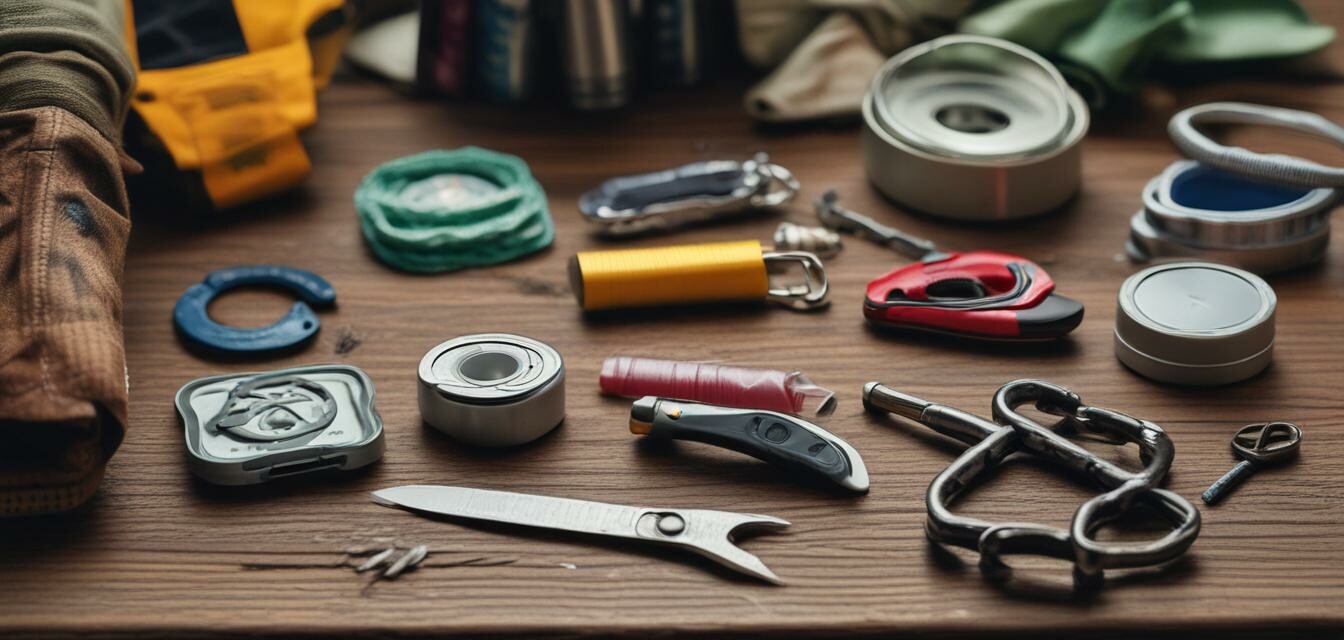
Essential Tools for DIY Camping Repairs
Key Takeaways
- Carrying essential tools can save your camping trip from unexpected mishaps.
- Multi-tools provide versatility, while duct tape offers quick fixes.
- Having a first aid kit and repair kits ensures safety and readiness.
- Know how to use each tool properly for best results.
When you're out in the wilderness, the last thing you want is for your camping gear to fail you. Having the right tools for DIY repairs can mean the difference between a smooth outdoor adventure and a troublesome experience. This guide will delve into the essential tools that every beginner camper should pack for those inevitable mishaps.
Why DIY Camping Repairs Matter
Even the best-quality camping gear can encounter issues in tough environments. From tents with minor tears to cooking gear that needs adjustment, knowing how to make quick repairs can enhance your camping experience. Here’s a list of essential tools to keep handy:
Essential Tools for Repairs
| Tool | Purpose |
|---|---|
| Multi-tool | Versatile, includes pliers, screwdrivers, and blades for various repairs. |
| Duct tape | Quick fix for tent repairs, packing, and gear adjustments. |
| Repair patches | Ideal for fixing holes in tents, sleeping bags, and jackets. |
| Rope or Paracord | Useful for securing gear, creating makeshift clotheslines, or tying up items. |
| Gorilla Glue or strong adhesive | For permanent fixes on various materials. |
| First aid kit | Essential for tending to injuries while on the trail. |
| Flashlight with extra batteries | Navigating and repairing gear in low light conditions. |
Detailed Breakdown of Essential Tools
Multi-tool
A multi-tool is arguably the most crucial item for DIY camping repairs. These handy devices usually combine several tools, including a knife, scissors, and screwdrivers, all in one compact unit. They save space and offer versatility, making them perfect for tackling a range of unexpected issues.
Duct Tape
Known for its miraculous fixing powers, duct tape can quickly patch up everything from a torn tent to a broken backpack strap. It’s lightweight and can be used in a pinch, making it a camping essential.
Repair Patches
Pack some repair patches for quick fixes on tents or inflatable gear. They typically come with strong adhesive and clear instructions on how to apply them properly, allowing you to restore your equipment without hassle.
Quick Application Steps for Repair Patches
- Clean the area around the tear.
- Cut a patch to size.
- Peel off the backing and stick the patch on.
- Press firmly and allow to set for the recommended time.
Rope or Paracord
Strong ropes or paracords can be used in various situations, from hanging food away from animals to securing tarps for extra shelter.
Strong Adhesives
Gorilla Glue or other types of strong adhesives can help you tackle more permanent fixes on various camping gear materials. Always check that it’s suitable for the material before applying!
First Aid for Camping
Having a first aid kit is just as crucial as having tools for repairs. Accidents can happen, so it’s wise to carry a basic first aid kit, including bandages, antiseptic wipes, and pain relievers. Knowing how to use these can give you peace of mind during your camping trip.
Tips for Beginners
Beginners Section
- Test your tools at home before hitting the trail.
- Familiarize yourself with the repairs you might need to do.
- Keep a checklist of tools and items to ensure nothing's left behind.
- Consider joining beginner camping groups for shared knowledge.
Maintaining Your Tools
While having the right tools is paramount, keeping them in top shape is equally important. Here are some simple maintenance tips:
- Regularly clean and inspect your multi-tool for any rust or damage.
- Store duct tape in a cool, dry place to preserve its adhesive properties.
- Replace any expired items in your first aid kit.
Conclusion
Equipping yourself with the right tools for DIY camping repairs prepares you for the unexpected. Whether it's a quick fix with duct tape or a more involved repair with a multi-tool, being ready means you can enjoy your time in nature without worry. Make sure to check out our other guides like Camping Buying Guides to learn more about optimizing your gear for the great outdoors.
Pros
- Prepares you for unexpected situations.
- Can save money on gear repairs.
- Enhances your camping experience with confidence.
Cons
- Some tools can add weight to your pack.
- Not all tools may be needed for every camping trip.